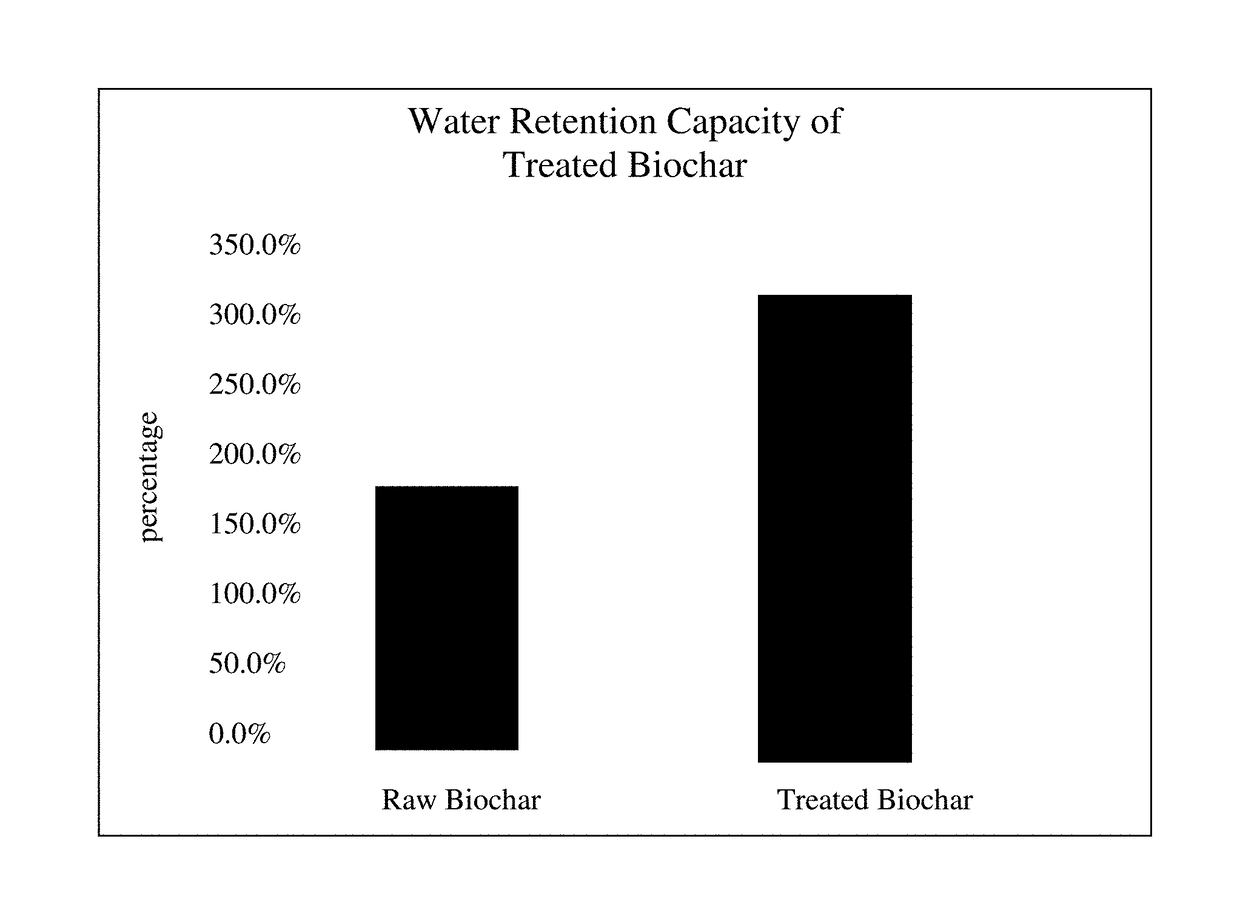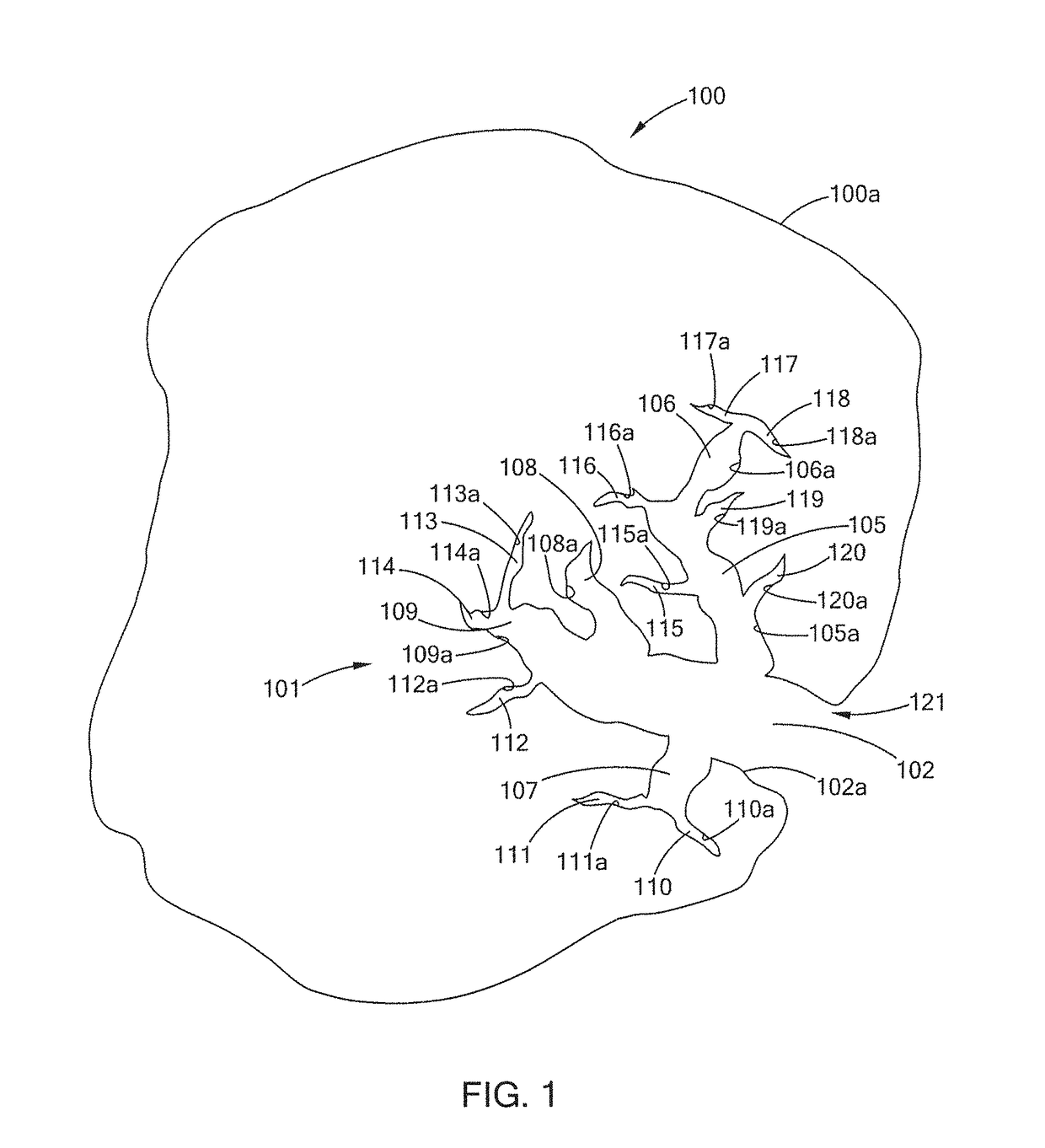Enhanced Biochar
a biochar and biochar technology, applied in the field of biochar, can solve the problems of toxic, harmful to the soil, and inconvenient use of biochar, and achieve the effect of enhancing soil health and plant li
- Summary
- Abstract
- Description
- Claims
- Application Information
AI Technical Summary
Benefits of technology
Problems solved by technology
Method used
Image
Examples
Embodiment Construction
[0055]Whether biochar is harmful or helpful to soil health, plant growth and yield and / or useful for other applications, including but not limited to animal application, depends largely on the chemical and physical properties of the biochar. In general, the present invention relates to biochar that is treated to have certain chemical and physical properties found to have the highest impact on plant growth and / or soil health. These properties or characteristics can be further enhanced and sustained for longer periods of time with the utilization of certain treatment processes and through the biomass processing and / or raw biochar selection. As explained further below, the resulting properties of the treated biochar can be tailored through biochar production, selection and treatment to achieve treated biochar having chemical and physical properties useful for specific applications.
[0056]Testing was performed on a variety of types of raw and treated biochar. The testing involved full la...
PUM
| Property | Measurement | Unit |
|---|---|---|
| particle size | aaaaa | aaaaa |
| density | aaaaa | aaaaa |
| density | aaaaa | aaaaa |
Abstract
Description
Claims
Application Information
 Login to View More
Login to View More - R&D
- Intellectual Property
- Life Sciences
- Materials
- Tech Scout
- Unparalleled Data Quality
- Higher Quality Content
- 60% Fewer Hallucinations
Browse by: Latest US Patents, China's latest patents, Technical Efficacy Thesaurus, Application Domain, Technology Topic, Popular Technical Reports.
© 2025 PatSnap. All rights reserved.Legal|Privacy policy|Modern Slavery Act Transparency Statement|Sitemap|About US| Contact US: help@patsnap.com



